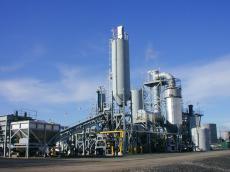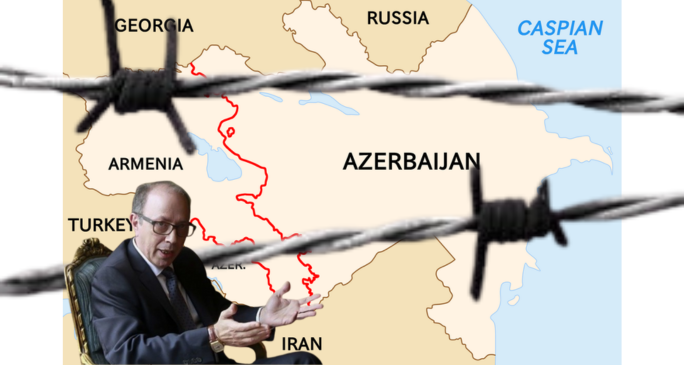|
|
TODAY.AZ / World news
Uzbekistan to oblige cement plants to establish air pollution analysis stations
27 November 2019 [14:58] - TODAY.AZ
 By Trend
By Trend
Uzbekistan’s State Committee for Ecology and Environmental Protection plans to oblige all existing cement enterprises to establish sampling and analysis stations for sources of air pollution, as follows from the draft resolution of the Cabinet of Ministers, Trend reports citing Uzbekistan’s National Legislation Base-Lex.uz portal.
“To oblige all cement enterprises operating in Uzbekistan to establish automatic stations for sampling and analysis of samples at sources of atmospheric air pollution, as well as stationary observation points in the adjacent territory at the expense of the economic entities by January 1, 2022,” the document says.
If this requirement is not met, measures will be applied to the plants, up to the suspension of their activities.
In addition, the document proposes to mandatory include all cement enterprises in the list of economic entities subject to monitoring of pollution sources from January 1, 2020.
The AirVisual international organization, which is engaged in monitoring air quality, put Uzbekistan in 16th place in the ranking of countries with the most polluted air in 2018.
According to AirVisual criteria, the concentration of impurities in the air in Uzbekistan is acceptable, but people sensitive to pollution should protect their health.
Since 2006, air pollution index (API) indicators in Tashkent have fluctuated at a level of 3.32-4.96 points. For the first quarter of 2019, the maximum permissible concentration (MPC) for nitrogen dioxide in the capital was 0.8 (0.97 for the same period in 2018), sulfur dioxide - 0 (0.6), ammonia - 3.0 (2.3), nitric oxide - 0.2 (0.29), dust - 0.7 (0.96), carbon monoxide - 0.7 (0.65), hydrogen fluoride - 0.6 (0.58), formaldehyde - 0.016 (0.024).
The level of urban air pollution is measured by the air pollution index (API). If API values ??are less than 5 points it corresponds to a reduced level of pollution. API is calculated by comparing the observed concentrations of pollutants with the maximum permissible concentrations (MPC) set for them, values ??above 1.0 are potentially hazardous to public health.
According to Uzhydromet’s measurements, over the past 10 years Tashkent has been characterized by background dust pollution, which exceeds the daily average MPC by 1.3–2.7 times, nitrogen dioxide by 1.3–2 times. Exceeding the maximum permissible concentration during the year in 10.4–42.7 percent of cases is recorded in a hot, dry, windless summer-autumn period.
URL: http://www.today.az/news/regions/188641.html
 Print version
Print version
Connect with us. Get latest news and updates.
See Also
- 19 September 2025 [08:00]
Huawei sets roadmap for Ascend AI chips over three years - 18 September 2025 [12:00]
TEKNOFEST Istanbul kicks off with spectacular air shows - 18 September 2025 [09:00]
Nokia launches Germany’s first 5G smart rail network - 17 September 2025 [23:30]
YouTube pays massive sums to content creators - 17 September 2025 [23:00]
Japanese political party to be headed by AI - 17 September 2025 [22:25]
US construction firm to receive AI-Enabled home appliances from LG Electronics - 17 September 2025 [21:55]
Another gold deposit discover in Morocco - 17 September 2025 [21:20]
Microsoft discontinue support for Windows 10 - 17 September 2025 [16:22]
Skies to witness partial solar eclipse - 17 September 2025 [09:00]
China surpasses Germany as most innovative country
Most Popular
 The inglorious end of the "Armenian project" - once again about Agrydag
The inglorious end of the "Armenian project" - once again about Agrydag
 Caspian littoral states discuss regional cooperation in Ashgabat
Caspian littoral states discuss regional cooperation in Ashgabat
 President Ilham Aliyev congratulates Qaraba? FC on their first UEFA Champions League group stage win
President Ilham Aliyev congratulates Qaraba? FC on their first UEFA Champions League group stage win
 Stuck in old dogmas, ex-diplomat hinders Armenia’s path to peace
Stuck in old dogmas, ex-diplomat hinders Armenia’s path to peace
 Etchmiadzin's last attempts - why did Garegin go to the Vatican?
Etchmiadzin's last attempts - why did Garegin go to the Vatican?
 Dutch Ministry of Foreign Affairs is correcting itself – but toponyms are not everything
Dutch Ministry of Foreign Affairs is correcting itself – but toponyms are not everything
 YouTube pays massive sums to content creators
YouTube pays massive sums to content creators
